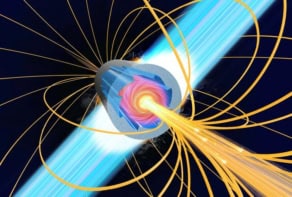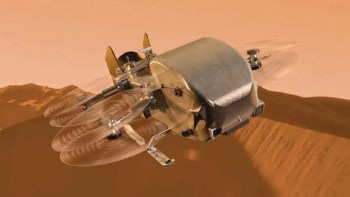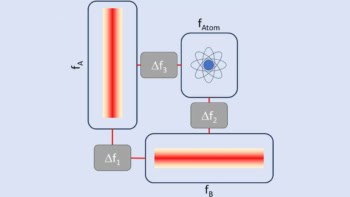Flash Physics is our daily pick of the latest need-to-know developments from the global physics community selected by Physics World‘s team of editors and reporters
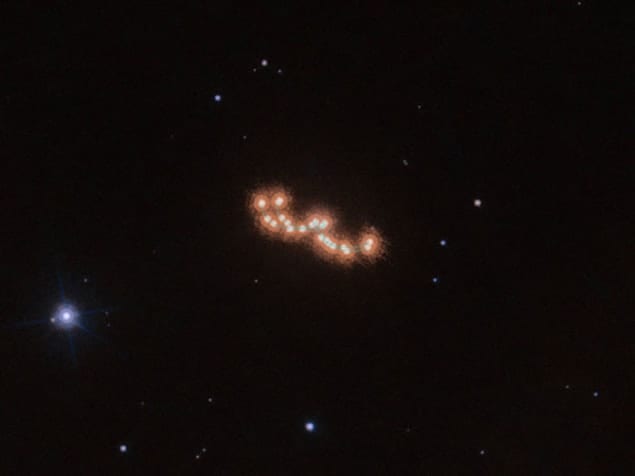
Hubble tracks dancing brown dwarfs
Astronomers working on the Hubble Space Telescope have tracked the motions of two nearby brown-dwarf stars, revealing the intricate “dance” that they appear to make as they orbit each other. Located just six light-years away, Lurhman 16AB is the third closest stellar system to Earth. Despite its proximity it was only discovered in 2013 and since then astronomers have been very keen to work out if the system of two brown dwarfs also contains a planet – something that had been suggested by observations made at the Very Large Telescope in Chile. Now, 12 images of the system taken by Hubble over three years have been studied using high-precision astrometry by a team led by researchers at the National Institute for Astrophysics in Italy. Great precision was needed because the two stars are separated by a distance just three times that between the Earth and the Sun. The presence of a planet would have a small effect on the motions of the stars, but no evidence of a planet was seen in the Hubble data.
Higgs boson’s “little brother” probably never existed
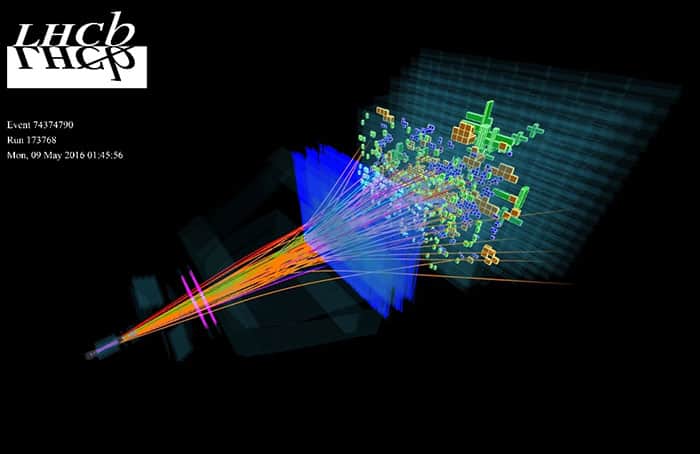
The hypothetical inflaton is almost certainly not the particle behind the universe’s rapid expansion soon after the Big Bang. This is according to an international collaboration of physicists working at the LHCb experiment on the Large Hadron Collider (LHC) at CERN, who have been looking for traces of the inflaton in the decay of B+ mesons. Back in 1981, Alan Guth proposed a new model of the early universe to explain why it looks the same in all directions today. He theorized that after the Big Bang the universe initially expanded slowly, allowing time for matter to interact and the temperature to level out. Then, there was a very short, extremely fast expansion of space–time, which happened so rapidly that the universe now appears uniform throughout. For such an expansion to take place, however, there must have been a force field behind it. “A new [force] field always means the existence of a particle that is the carrier of the effect,” explains team member Marcin Chrzaszcz from the Institute of Nuclear Physics of the Polish Acadamy of Sciences (IFJ PAN). For a while, it was thought that this particle was the Higgs boson – however, when it was observed in 2012, the boson was too heavy to be the correct candidate. So theoreticians proposed a new particle called the inflaton, which had the properties of the Higgs boson but a smaller mass. To prove its existence, physicists looked at the decay of B+ mesons, which sometimes decay into K+ mesons and Higgs bosons. According to quantum mechanics, the near-identical nature of the “brother” particles means that they transform and oscillate between each other, so the Higgs boson should then convert into the inflaton. Rather than directly measuring the inflaton or Higgs, the LHCb detects their decay into a muon and antimuon. “Depending on the parameter describing the frequency of the inflaton–Higgs oscillation, the course of B+ meson decay should be slightly different,” Chrzaszcz explains. “We found nothing. We can therefore say with great certainty that the light inflaton simply does not exist.” The work is presented in Physics Review D.
“Living diodes” are made from muscle cells
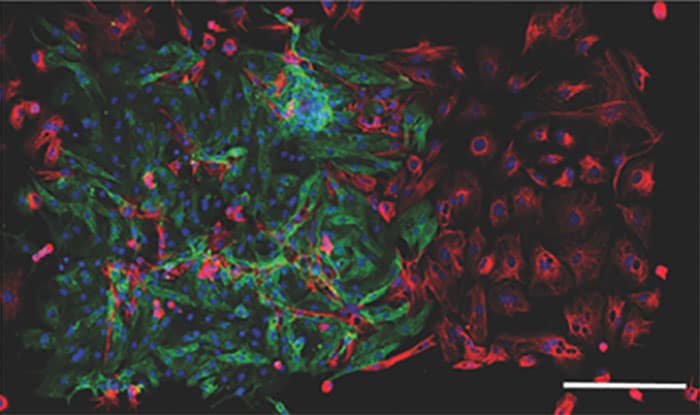
Two different types of muscle cells have been combined to create an electrical diode. Built by Pinar Zorlutuna and colleagues at Notre Dame University in the US, the device comprises two adjacent squares (each measuring about 400 μm) that are covered in cells found in rat hearts. One square contains cardiac muscle cells, which respond to an applied electrical signal by outputting electrical signals of their own. This means that an applied signal is propagated actively across the square. The other square contains cardiac fibroblast cells, which can absorb electrical signals but do not output signals on their own. While no active propagation occurs in the cardiac fibroblast square, an electrical signal can propagate passively over short distances. When an electrical pulse is applied to the cardiac-muscle side of the device, it propagates actively to the junction between the two squares. Once the pulse enters the cardiac fibroblast, it propagates passively and the output of the device is an attenuated version of the input signal. However, when a similar pulse is applied to the cardiac-fibroblast side of the device, it is attenuated by the time it reaches the junction and is below the voltage threshold required to cause cardiac muscle cells to output electrical pulses of their own. As a result, there is no active propagation in the opposite direction and no signal reaches the other side of the device. Writing in a preprint on arXiv, the researchers say that the device could be used to study electrical interactions between different types of muscle cells. Looking further in the future, they say the device could be used to create electronic and computer devices that could be integrated with the human body.

